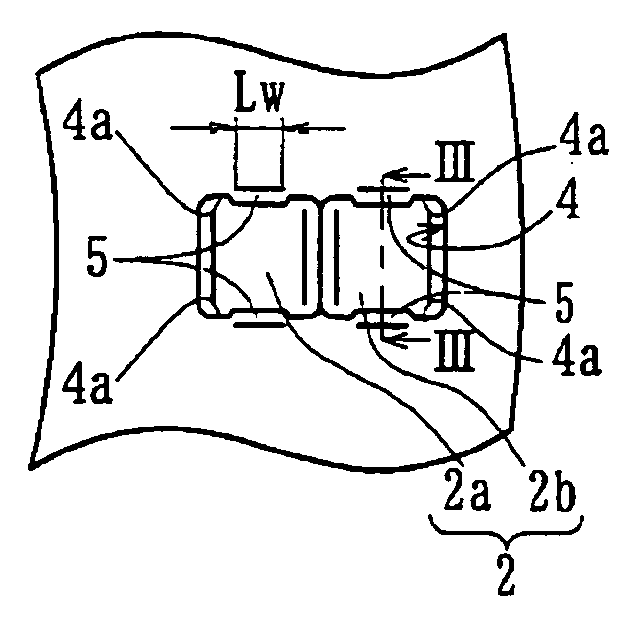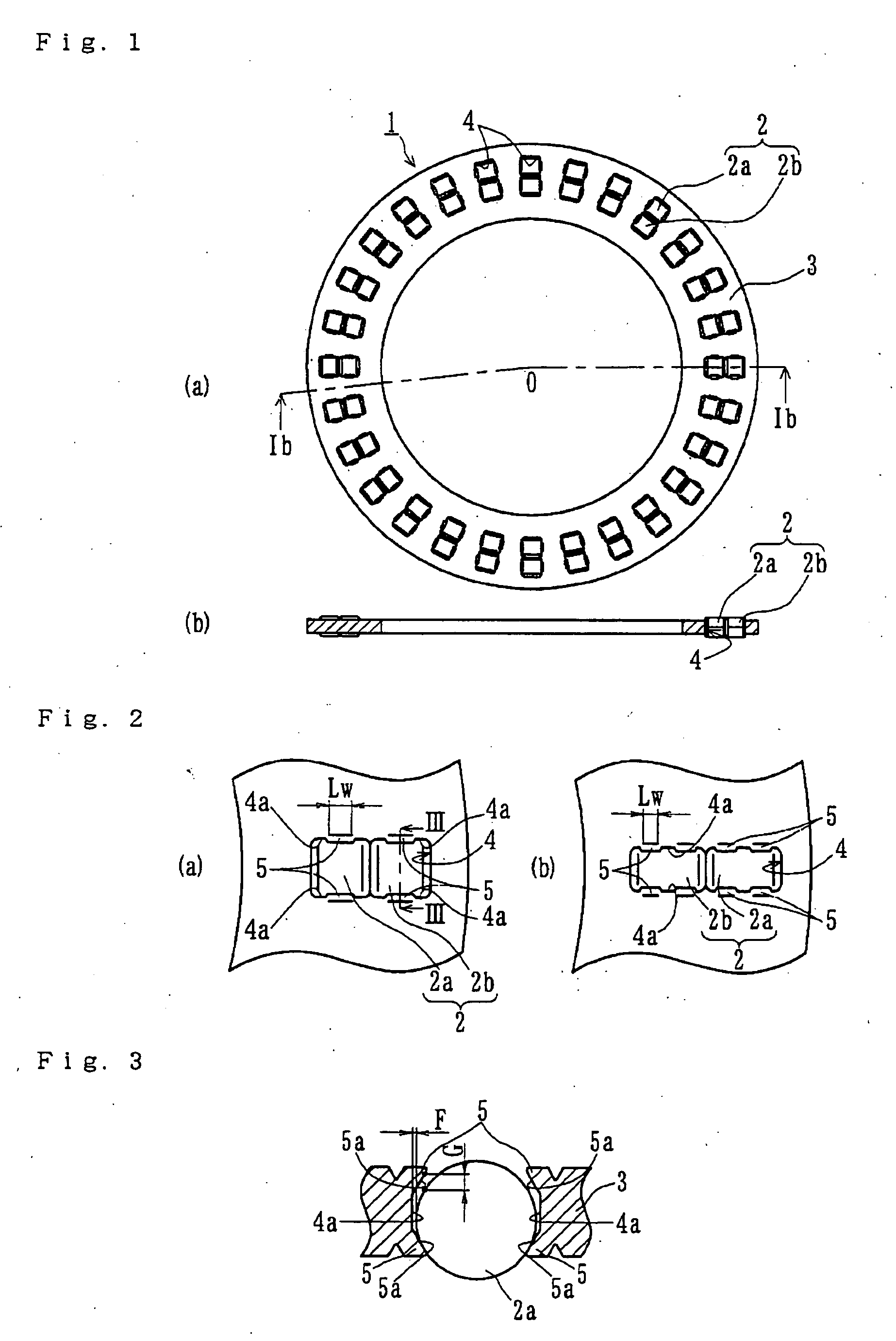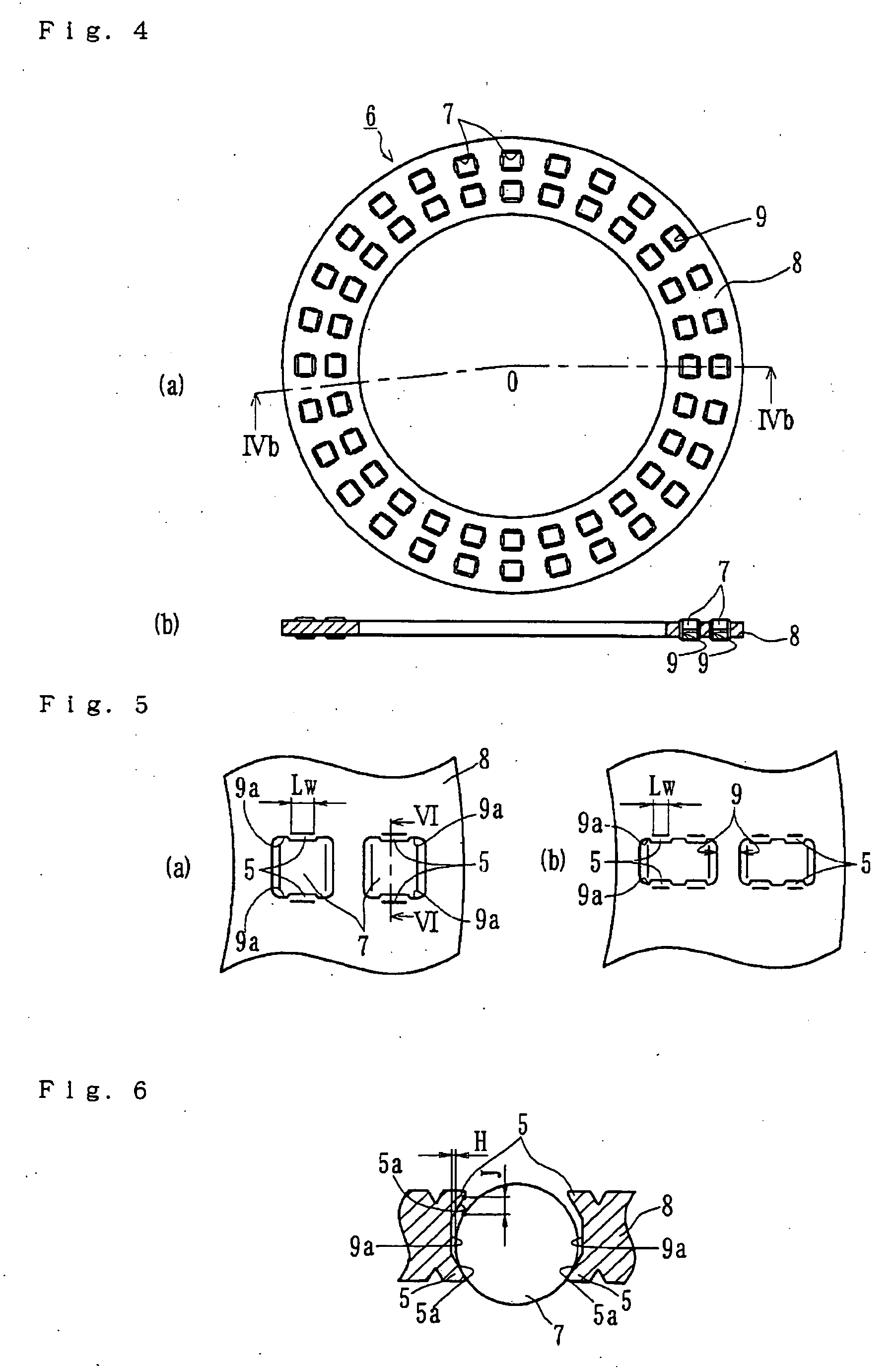Thrust needle roller bearing
a needle roller bearing and thrust technology, applied in the direction of rolling contact bearings, shafts and bearings, rotary bearings, etc., can solve the problems of increasing manufacturing costs, unsuitable for the majority variety/minority lot production required to satisfy a recent trend of diversification of needs, etc., to reduce differential slippage of needle rollers, improve durability, and improve the effect of processing cos
- Summary
- Abstract
- Description
- Claims
- Application Information
AI Technical Summary
Benefits of technology
Problems solved by technology
Method used
Image
Examples
first embodiment
[0048]FIG. 1(a) is a plan view of a double row thrust needle roller bearing of the present invention. FIG. 1(b) is a cross-sectional view taken along a line Ib-O-Ib in FIG. 1(a). FIG. 2(a) is a partial enlarged view of FIG. 1(a). FIG. 2(b) is a similar partial enlarged view of a modified embodiment of FIG. 2(a). FIG. 3 is a cross-sectional view taken along a line III-III in FIG. 2(a).
[0049] The double row thrust needle roller bearing 1 includes a plurality of needle rollers 2, and a cage 3 to hold the needle rollers 2 at a predetermined pitch in the circumferential direction. The cage 3 is made by cutting soft metal materials such as copper alloy; some examples are high tensile brass casting (JIS CAC 3 etc.), aluminum / bronze casting (JIS CAC 7 etc.), aluminum, aluminum alloy, or aluminum alloy casting. The cage 3 has a plurality of pockets 4 each formed as a rectangular configuration. Each pocket 4 has a length of its longitudinal (radial) side longer than that of each needle roller...
second embodiment
[0057]FIG. 4(a) is a plan view of a double row thrust needle roller bearing of the present invention. FIG. 4(b) is a cross-sectional view taken along a line IVb-O-IVb in FIG. 4(a). FIG. 5(a) is a partial enlarged view of FIG. 4(a). FIG. 5(b) is a similar partial enlarged view of a modified embodiment of FIG. 5(a). FIG. 6 is a cross-sectional view taken along a line VI-VI in FIG. 4(a).
[0058] The double row thrust needle roller bearing 6 comprises a plurality of needle rollers 7 and a cage 8 to hold the needle rollers 7 at a predetermined pitch in the circumferential direction. Similar to the first embodiment, the cage 8 is made by cutting soft metal materials such as copper alloy. Some examples are high tensile brass casting (JIS CAC 3 etc.), aluminum / bronze casting (JIS CAC 7 etc.), aluminum, aluminum alloy, or aluminum alloy casting (JIS AC etc.). The cage 8 has a plurality of pockets 9 each formed in a rectangular configuration with a length of its longitudinal (radial) side longe...
third embodiment
[0064]FIG. 7 is a plan view of a double row thrust needle roller bearing of the present invention. Similar to the second embodiment (FIG. 4), this embodiment has a double row pockets of radially outer and inner rows, respectively, of same number. However, the arrangement of the pockets is different.
[0065] The double row thrust needle roller bearing shown in FIG. 7(a) includes a plurality of needle rollers 7 and an annular cage 10 to hold the needle rollers 7 at a predetermined pitch in the circumferential direction. Similar to the previously described embodiments, the cage 10 is made by cutting soft metal materials such as copper alloy. Examples are high tensile brass casting (JIS CAC 3 etc.), aluminum / bronze casting (JIS CAC 7 etc.), aluminum, aluminum alloy, or aluminum alloy casting (JIS AC etc.). The cage 10 has a plurality of pockets 11. Each pocket is formed as a rectangular configuration with a length of its longitudinal (radial) side longer than that of each needle roller 7....
PUM
 Login to View More
Login to View More Abstract
Description
Claims
Application Information
 Login to View More
Login to View More - R&D
- Intellectual Property
- Life Sciences
- Materials
- Tech Scout
- Unparalleled Data Quality
- Higher Quality Content
- 60% Fewer Hallucinations
Browse by: Latest US Patents, China's latest patents, Technical Efficacy Thesaurus, Application Domain, Technology Topic, Popular Technical Reports.
© 2025 PatSnap. All rights reserved.Legal|Privacy policy|Modern Slavery Act Transparency Statement|Sitemap|About US| Contact US: help@patsnap.com



